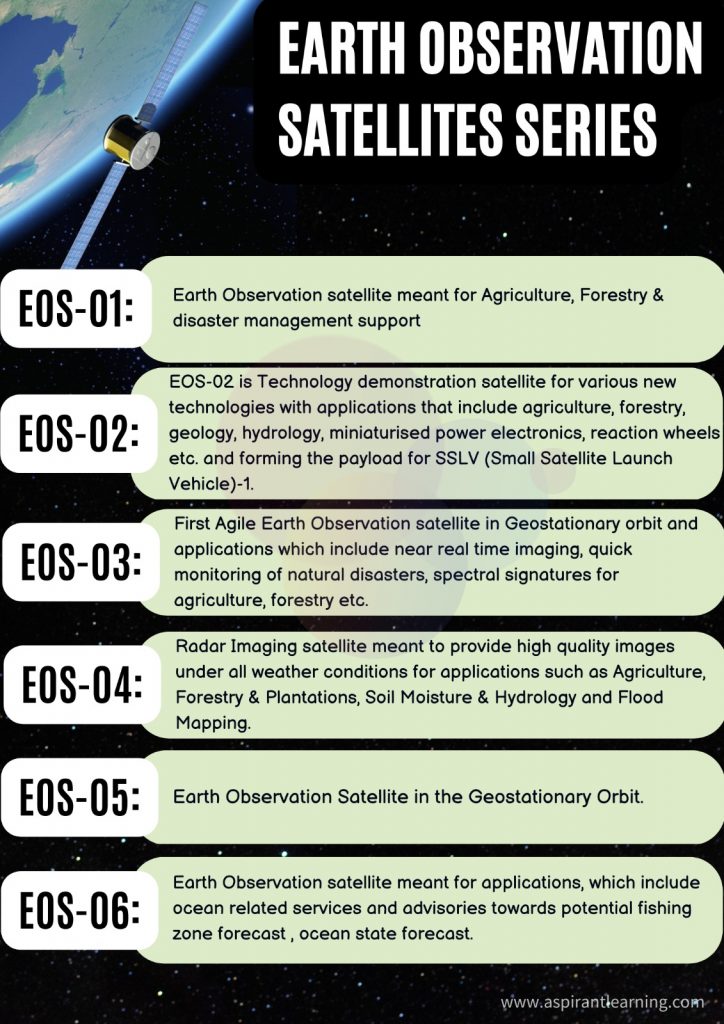News Highlights:
The Indian Space Research Organization (ISRO) will launch the Small Satellite Launch Vehicle (SSLV) on its second development flight from Sriharikota.
Key takeaway:
- The vehicle is designed to launch the EOS-07 satellite from ISRO, Janus-1 from the American company Antaris, and Chennai-based start-up Space Kidz’s AzaadiSAT-2 satellites into a 450-km circular orbit.
- Janus-1 is a technology demonstrator, a smart satellite mission based on the Antaris software platform weighing around 10.2 kg.
- AzaadiSAT-2, an 8.7-kg satellite, was built by 750 female students from throughout India under the guidance of Space Kidz India, Chennai.
Small Satellite Launch Vehicle:
- About:
- A three-stage launch vehicle called the Small Satellite Launch Vehicle (SSLV) is designed with three solid propulsion stages, and a terminal stage called the Velocity Trimming Module (VTM) that uses liquid propulsion.
- ISRO’s SSLV can carry satellites weighing less than or equal to 500 kg.
- The launch vehicle will carry the small satellites into 500 km LEO (Low Earth Orbit).
- Manufacturing of SSLV is the responsibility of the commercial arm of ISRO, i.e. NSIL (New Space India Limited).
- SSLV is ISRO’s lightest launch vehicle, weighing around 110 tons.
- The SSLV integrates in 72 hours as compared to the PSLV’s 70 days.
- Key Features:
- Low price
- Quick turnaround,
- Multiple satellites can be accommodated with ease,
- Possibility of meeting the demand for launches,
- Minimal infrastructure needs.
- Legacy of tested design techniques.
- Significance:
- With SSLV, several satellites can be supported with the least amount of equipment.
- SSLV needs only 6 people to integrate it.
- Small satellite launches have been increasingly popular during the last eight to ten years due to the expanding need for space-based data, communication, surveillance, and commerce.
- Since most of the demand comes from businesses that are launching satellites for commercial purposes, there is an economic opportunity for space organisations like ISRO to capitalise on the sector’s potential due to the increase in demand for rocket launches.

Earth Observation Satellites (EOS):
- About:
- An Earth observation satellite or Earth remote sensing satellite is a satellite used or designed for Earth observation from orbit.
- It includes spy satellites and similar ones intended for non-military uses such as environmental monitoring, meteorology, cartography, etc.
- Earth observation satellites employ a Sun-synchronous quasi-periodical orbit.
- Example-RESOURCESAT- 2, 2A, CARTOSAT-1, 2, 2A, 2B, RISAT-1.
- EOS-07 satellite:
- The 156.3 kilogramme EOS-07 satellite was created, constructed, and launched by the ISRO.
- Its mission objective is to design and develop payload instruments compatible with microsatellite buses and new technologies that are required for future operational satellites.
- It would also design and develop a microsatellite accommodating new technology payloads in a quick turn-around time.
Pic Courtesy: Freepik
Content Source: The Hindu



